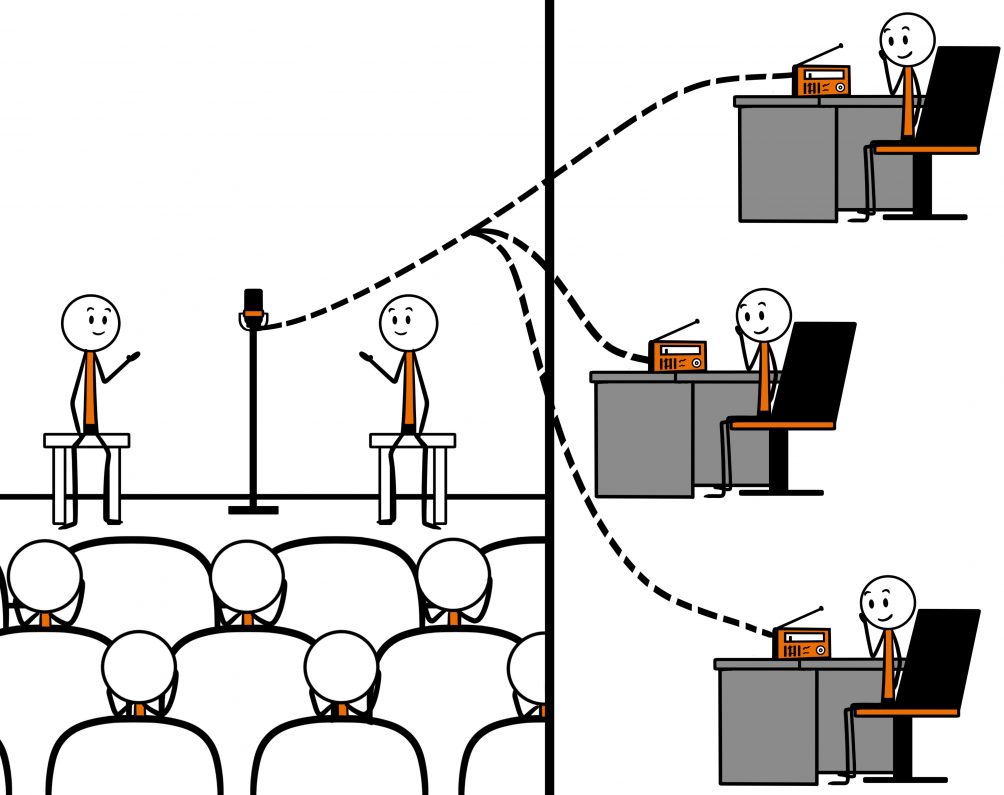Hybrid presenting is tough – you must ask these key questions before you begin your preparation.
There is so much more to hybrid presenting than the baseline situation of some people being present in person, and others connecting remotely.
One of the biggest errors of judgement is this: assuming all hybrid presentations are the same.
Within the area of hybrid presenting there are many different species.
When I’m working with those delivering such a presentation, there are dozens of considerations we go through to ensure the speaker knows exactly what they are facing.
It sounds like a lot – but anyone who’s either delivered or received a sub-standard hybrid presentation will know all too well the multitude of things that can go wrong.
Here are some of the main factors to bear in mind.
What are the specifics of YOUR hybrid
Let’s start with the most common type of hybrid.
You are in the room with some of the audience, while others are watching remotely.
Sometimes there are more people in the room.
Sometimes there are equal amounts in both settings.
Sometimes there are more people watching remotely.
Three very different approaches would be needed.
Sometimes the remote audience are in a multitude of locations, each of them sitting individually.
Sometimes (less commonly) they are sitting together in just a few locations.
Two slightly different approaches would be needed.
Then there is another key question to ask – can you see your remote audience?
Will they have their cameras on or off, and will the venue from which you’re speaking have a screen where-by you can feed off the reaction of a digital crowd?
And can they see you, or only your slides?
How you approach things can vary enormously depending upon the answer to those questions.
Let me give a real life illustration.
When I was a politician I often took part in a BBC Radio Scotland show called Brian Taylor’s Big Debate. There were usually four politicians discussing the issues of the week. It was basically Question Time for radio.
There was an audience of around 100 in the venue. They could ask questions and vent their feelings.
Then there was the radio audience listening to the live broadcast, probably numbering in the thousands. They could not see you and you could not see or hear them.
As a panellist you had to give careful thought about engaging with the audience in the room, while at the same time appealing to the much larger audience of listeners. This was true hybrid presenting!
Get this balance wrong and you could have a problem.
Don’t wander into the unknown
In pre-hybrid times a speaker would usually know who their audience was as well as the layout and technological features of the room.
If anything, when you bring the latest digital advancements into play – with all the risk that carries -it’s even more important to know what you are facing.
Find out all of these factors before preparing for your presentation, and the event itself will be considerably smoother and more successful as a result.
And remember, inside the hybrid presenting envelope lie a great number of variations.
Want some help? Check out our SketchNote to give you a few more ideas – just click on the link below…


